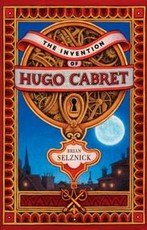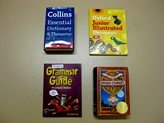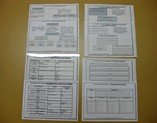Language Therapy Syntax
 Language Therapy Syntax: This webpage demonstrates a typical language intervention
session with an 12 year old boy with language impairment. The language domain the clinician
has targeted are syntactical skills.
Language Therapy Syntax: This webpage demonstrates a typical language intervention
session with an 12 year old boy with language impairment. The language domain the clinician
has targeted are syntactical skills.
The goal of these particular language therapy webpages is to demonstrate real, authentic language
intervention techniques and provide you with strategies and examples of high efficacy language therapy.
The goal is for you - whether you be a speech-language pathologist, teacher or parent - to have confidence to try this type of language intervention on your own students.
The language intervention method chosen is based on communicative reading strategies (Norris, 1991), as outlined and explained in Kathryn DeKemel's book,
Intervention in Language Arts.
Another book worth reading about text-based
intervention is Geraldine Wallach's ,
Language Intervention for School-Age Students.
To acquaint yourself with communicative reading strategies as a language intervention method I recommend you
access the shared reading page and associated links. This will give you a brief but thorough background and foundation in the theory of communicative reading strategies.
Language Intervention - Syntax
Language Therapy Syntax cont...
Let's begin...
Background Information: Michael (name and situation changed) is a 12 year old child who
has been referred by his classroom teacher for language assessment. The class teacher has concerns about Michael's listening skills, written language skills and also reading comprehension skills.
Michael's CELF-4 (Clinical Evaluation of Language Fundamentals, 2006, Semel, Wiig, Secord) results indicated
that he had trouble with Concepts and Following Directions and the Formulated Sentences sub-tests. His score for these sub-tests was significantly below average.
The Concepts and Following Direction sub-test involves many questions with increasingly complex, embedded subordinate clauses. Michael's difficulty with this sub-test could indicate weak working memory ability and, conspicuously, problems with complex sentence comprehension.
Language Intervention Goals - Sentence Comprehension
Language Therapy Syntax cont...
Objective: Michael will identify, parse, and manipulate compound and complex sentence forms from a target storybook.
Learning Approach:Communicative reading strategies, parsing strategies, and scaffolded language stimulation
techniques.
Materials: Storybook, grammar book, graphic organizers (Compound and complex sentences maps) and syntax
worksheets.
Rating: Syntax Scoring Chart
Resource Download

Therapy Goals Worksheet
Right-click to download this PDF file here.
Book Selection
Language Therapy Syntax cont...
It's very important that the book chosen for therapy is at the right level of complexity for the
student. If the book's too difficult the child may flounder; if it's too easy the child will learn little.
The
Fry readability graph
is a very useful tool for selecting books based on grade level. But the most
important method is to have your student read to you from a chosen book and note the number of miscues
he/she makes. It is also important to question the child to determine if he/she understood the story or the targeted story passage.
Selected Book
Language Therapy Syntax cont...
 The Invention of Hugo Cabret,
by Brian Selznick, 2007.
The Invention of Hugo Cabret,
by Brian Selznick, 2007.
The Invention of Hugo Cabret
Author/Illustrator: Brian Selznick
Publisher: Scholastic Press. Published March: 2007
ISBN-10:0-439-81378-6
Fry Readability Graph Rating: Grade 6 level text.
A reading miscue analysis indicated that Michael read/decoded the text at an adequate level.
However, subsequent questioning revealed that Michael's understanding of the stories themes and events was below average.
The story had many relevant compound and complex sentences embedded in the text,
and was thus chosen as the primary syntactical awareness teaching tool.
Other Therapy Materials
Language Therapy Syntax cont...

Grammar Book: A children's grammar book has many excellent descriptions of what sentences, clauses and conjunctions are, and how they are constructed.
Graphic Organizers: Key information worksheets. Graphic organizers are a visual aid to help
students comprehend difficult or abstract concepts.

The graphic organizers pictured here are available as adobe downloads from this page.
Language Intervention Session
Language Therapy Syntax cont...
For this language therapy session, I targeted a passage that was in the first chapter. The book
is quite lengthy and has twelve chapters. It's not possible to finish the book in one session, of course. It's ok to work on one small passage from a particular chapter at a time.
The Invention of Hugo Cabret has multiple, graphic book art type illustrations and a very engaging story that students respond well to. So it works well as a language teaching tool, even for something
as abstract as syntax and subordinate clause awareness.
Passage from Text
Language Therapy Syntax cont...
'But suddenly there was movement from inside the booth, and the sleeping man sprang to life.
Before Hugo could run, the old man grabbed his arm.'
Excerpt from, The Invention of Hugo Cabret, by Brian Selznick, 2007.
As we can see from the excerpt there are two sentences to target for therapy: a compound sentence
and a complex sentence. If you have difficulty identifying the two types of sentences please
read the compound and complex sentence webpages, and then return here.
The focus of the therapy session is for Michael to be able to understand what a compound sentence is
and how it differs from a complex sentence. Before he engages Michael with these abstract terms, the clinician questions Michael, to identify his level of syntactical awareness.
Clinician: 'Michael, do you know what a sentence is?'
Michael: 'Uum...is it like a something with a capital letter and a full stop?'
Clinician: 'Yes, certainly. A sentence has a capital letter at the beginning and ends with a full stop. Also, a sentence is something that contains a complete idea, has a verb and makes sense on its own.'
The clinician points at a simple sentence in the book.
Clinician: So for instance, if we look here "Hugo needed the toys." is a sentence. "The toys" is not a sentence because it is not a complete thought or statement. It also doesn't have a verb. "The toys" is just a phrase.'
Small, Portable Whiteboard
Language Therapy Syntax cont...
The clinician writes the sentence and the phrase onto a small whiteboard. The clinician points to the sentence,
'Hugo needed the toys,'and asks Michael to point to the verb. Michael correctly points to the word 'needed'
and explains that it's a verb.
After a quick explanation and revision of subject-verb-object the clinician is satisfied that Michael has some background knowledge of simple sentence form. The session continues on to a discussion of compound sentences, one of the goals for the session.
Clinician: 'All sentences have clauses. A simple sentence can also be called a main clause. A main clause consists
of one complete idea. So if we go back to our earlier example, "Hugo needed the toys." we can see that it is
a complete sentence, or a complete thought, so it is a main clause.'
Compound Sentence Discussion
Language Therapy Syntax cont...
Resource Download
 Compound Sentence Definition
Compound Sentence Definition
Right-click to download this PDF file here.
Clinician: 'Now, this is really important Michael. A compound sentence has two main clauses.
The clinician pauses and allows the information time to be absorbed by Michael. The clinician then writes the target compound sentence onto the whiteboard, with the two clauses staggered, one under the other.
'But suddenly there was movement from inside the booth...'
and
'...the sleeping old man sprang to life.'
The clinician points to the first clause and explains that it is a single clause. The clinician then
points to the second clause and says that it also was a clause.
Clinician: 'How many clauses Michael, in this sentence?'
Michael: 'Two.'
Clinician: 'That's correct. Well done. There are two clauses. Both clauses could easily be made into separate simple sentences, because simple sentences only have one clause. But this is a compound sentence, and compound means to have more than one part.'
Clinician: 'Now Michael, you've correctly identified that this sentence has two parts. And there's something else we haven't discussed - a compound sentence needs a link
word. It's better known as a coordinating conjunction. The link word helps join the two clauses to each other. What do you think the link word is for this sentence?'
Sentence Fragment Worksheets
Language Therapy Syntax cont...
Resource Download
 Sentence Fragments Worksheet
Sentence Fragments Worksheet
Right-click to download this PDF file here.
Michael points to the word 'and.' He is then encouraged to read the sentence in its entirety. The clinician then
produces the sentence fragment worksheet (the individual boxes had been cut out prior to the session starting).
Michael writes the individual clauses into the main clause boxes and writes the word 'and' into the conjunction box.
The rationale for Michael writing the clauses into the boxes provided on the worksheet, is to reinforce that long compound and complex sentences can be broken down
into fragments, and then put back together again. The deliberate deconstruction of the elements that make up written language is a pure metalinguistic awareness activity.
The clinician then has Michael write the target compound sentence onto the syntax worksheet. Michael, with the clinician's
direction, then separates the two clauses into fragments and writes the word 'and' into the link box.
Clinician: 'Well done Michael. Good work. Can you tell me what main parts each compound sentence has? You can look at your definition sheet if you need to.'
Michael: 'A compound sentence has two clauses, which are like two sentences and its joined by 'and'.
Complex Sentence Discussion
Language Therapy Syntax cont...
Clinician: 'We have just spent some time talking about compound sentences. We know that compound sentences are
made up of two or main clauses and are joined by a conjunction.'
The clinician writes compound sentence on the whiteboard, and underneath writes main clause - conjunction - main clause. Beneath this
construction the clinician writes Complex Sentences. He also places the complex sentence definition worksheet in front
of Michael.
Clinician: 'A complex sentence - like a simple and compound sentence - has a main clause. The difference here
is that a complex sentence has a clause attached to the main clause, called a subordinate clause. A subordinate clause relies on the main clause for completion.'
Clinician: 'A subordinate clause says more about the main clause. But it
cannot stand alone. It's not a complete sentence. It's an unfinished thought really.'
This is a large amount of abstract knowledge for Michael to absorb, so he begins to look a little confused.
The clinician points to an example on the definition worksheet of a complex sentence, broken into sentence fragments. This action helps to help illustrate his point that subordinate clauses are incomplete thoughts.
Complex Sentence - Definition Sheet
Language Therapy Syntax cont...
Resource Download
 Complex Sentence Definition
Complex Sentence Definition
Right-click to download this PDf file here.
 Complex Sentence Definition Worksheet
Complex Sentence Definition Worksheet
Right-click to download this PDF file here.
 Complex Sentence Definition Worksheet Example
Complex Sentence Definition Worksheet Example
Right-click to download this PDF file here.
Clinician: 'Here we have an example of a complex sentence. "We ate the apples, which the others had picked, because we
were so hungry." If you notice, the main clause is represented by a blue box. "We ate the apples." Is that sentence? Does that make sense on its own?'
Michael: 'I'm not sure.'
Clinician: 'If I come up to you and say, "Hi Michael, we ate the apples." Does that make sense?'
Michael: 'I think so.'
Clinician: It does actually. "We ate the apples" is a main clause. And what did we say before about a main clause?'
Michael: (after a pause) 'A main clause is a sentence.'
Clinician: 'That's right. A main clause is a sentence and is a complete thought. A subordinate clause is a bit different. It's not complete. It can't stand alone as a sentence. If I were to say to you, "Hi Michael, which the others had picked." Does that make any sense?'
Michael: 'No, it's silly.'
Clinician: 'Exactly, it's silly. "Which the others had picked" is incomplete. It's a subordinate clause - it needs
to attach itself to the main clause to make sense. What about if I were to say, "We ate the apples which the others
had picked." Does that make sense?'
Michael pauses and seems unsure. The clinician repeats the sentence several times. Michael trusts his instincts, in that
the sentences sounds complete.
Michael: 'I think it sounds ok.'
Clinician: 'Definitely! I agree. It sounds ok because the subordinate clause "which the others had picked" is attached
to the main clause "we ate the apples" and modifies the main clause. Subordinate clauses make a simple sentence
into a really interesting sentence - a complex sentence. By the way, good writers use complex sentences in their writing all the time.
So they're worth knowing about.'
Clinician: 'Michael, if you learn what a complex sentence looks like - and that's what I'm going to teach you - you can start using them in your own writing. Once you learn to recognize them you'll also be able to understand what you're reading a little better. That's what I think.'
Connectors for Subordinate Clauses
Language Therapy Syntax cont...
Resource Download
 Connecting Words for Clauses
Connecting Words for Clauses
Right-click to download this PDF file here.
The clinician place the connectors for subordinate clause worksheet in front of Michael.
Clinician: 'If we return to the book we were reading it has the sentence, "Before Hugo could run, the old man
grabbed his arm." This is actually a complex sentence. Let's see if we can identify the main clause.'
The clinician writes the target sentence on the whiteboard.
Clinician: 'Michael, what did we say before about main clauses?'
Michael: 'They're sentences.'
Clinician: 'Yes, a main clause is a sentence and a complete thought. If we look at our example,
we can see that it contains two parts, "before Hugo could run" and "the old man grabbed his arm." Which of those
two fragments is the main clause? Look for the clause that makes sense as a complete thought.'
Michael carefully scans the two sentence fragments on the whiteboard. After a few minutes he correctly identifies the fragment 'the old man grabbed his arm,' as the main clause.
Clinician: 'Yep, you're right. Why did you choose that fragment Michael?'
Michael: 'The other one, (Michael reads...) "before Hugo could run," doesn't make sense. It's not finished. The other sentence
sounds more finished.'
Clinician: 'That's fantastic Michael. I'm so impressed with how you worked that out. Yep,
the fragment "before Hugo could run" is a subordinate clause. It's incomplete.'
Clinician: 'I'd now like you to write the
sentence from the book onto the worksheet and write out the sentence fragments. By the way, what's the link word? Look at the subordinate
clause connectors sheet and see if you can find it. It's there somewhere.'
Michael, with a bit of direction from the clinician, identifies 'before' as the link word for the subordinate clause. He is also
encouraged to read the section about conjunctions, used to join subordinate clauses, in a grammar book.
Michael is encouraged to write the word 'before' into the link box on the worksheet.
Language Intervention - Summarization
Language Therapy Syntax cont...
It has been a productive session. Michael has had to work hard but, with the clinician's guidance, he was able to
learn several new abstract grammatical terms such as clause, coordinating conjunction and compound and complex sentences.
The clinician summarizes the key points and reviews the session with Michael.
Clinician: 'We talked about several new concepts today. You learnt what a clause was and how simple sentences are
single main clauses. We also talked about compound sentences and how they are made up of multiple main
clauses, but are joined by coordinating conjunctions - words such as 'and' and 'but.'
We talked briefly about complex sentences and how good writers use them often. We spent some time on identifying complex sentences. And a good way to do that is to break a sentence into fragments and then manipulate the fragments.
By doing this we can better identify subordinate clauses, because they
don't make sense on their own and need to be attached to a main clause to be complete.
Remember that a complex sentence is a main clause and has subordinate clauses attached to it.'
Language Intervention - Conclusion and Scoring Chart
Language Therapy Syntax cont...
Michael is given a brief quiz by the clinician, trying to determine how much he has in fact retained.
Michael had to learn a large amount of information this session, so the knowledge he has accumulated will need to be strengthened and reinforced next session.
Resource Download
 Syntax Scoring Chart
Syntax Scoring Chart
Right-click to download this PDF file here.
The clinician scored Michael's verbal knowledge for the terms clause, compound sentence, and complex sentence.
Michael's responses to the questions were adequate but lacking in detail. Michael wasn't required to write
an example of a compound or a complex sentence. That is something that may be explored next session.
Michael's score was 1 on the syntax scoring chart. In that Michael has some understanding of the target sentence, but has trouble describing it or writing it.
References
Collins Essential Dictionary and Thesaurus (2007) Harper Collins Publishers
DeKemel, K.P. (2003) Intervention in Language Arts: A Practical Guide for Speech-Language Pathologists. Butterworth-Heinemann.
Kaderavek, J & Justice, L.M. (2002) Shared Storybook Reading as an Intervention Context: Practices and Potential Pitfalls. American Journal of Speech-Language Pathology, Vol 11. 395-406.
Norris, J.A. (1991) From Frog to Prince: Using Written Language as a Context for Language Learning, Topics in Language Disorders. Vol 12, 66-81
Paul, R. (2001) Language Disoders form Infancy through Adolescence. Assessment and Intervention. Mosby
Scott, C.M. (2009) A Case for the Sentence in Reading Comprehension. Language, Speech and Hearing Services in Schools. Vol 40. 184-191.
Selznick, B. (2007) The Invention of Hugo Cabret. Scholastic Press
Wallach, G.P. (2008) Language Intervention for School-Age Students: Setting Goals for Academic Success. Mosby Elsevier
Wagner, R.K. Muse, A.E. & Tannenbaum, K.R. (2007) Vocabulary Acquisition: Implications for Reading Comprehension. The Guilford Press
Content Last Modified 8/11
Return from Language Therapy Syntax to Language Therapy
Enjoy this page? Please pay it forward. Here's how...
Would you prefer to share this page with others by linking to it?
- Click on the HTML link code below.
- Copy and paste it, adding a note of your own, into your blog, a Web page, forums, a blog comment,
your Facebook account, or anywhere that someone would find this page valuable.



 Language Therapy Syntax: This webpage demonstrates a typical language intervention
session with an 12 year old boy with language impairment. The language domain the clinician
has targeted are syntactical skills.
Language Therapy Syntax: This webpage demonstrates a typical language intervention
session with an 12 year old boy with language impairment. The language domain the clinician
has targeted are syntactical skills.



